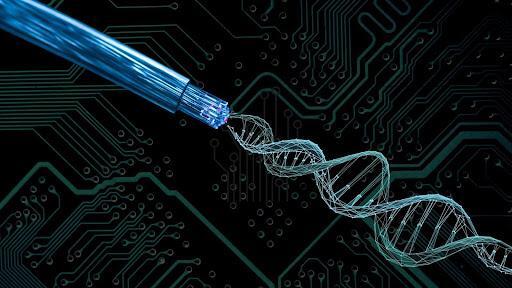
DNA’s Electron Flow May Unlock Future Biocompatible Electronics
In recent years, scientists have been exploring the electrical properties of DNA, and a new breakthrough has brought us one step closer to harnessing its potential for biocompatible electronics. Researchers have discovered that the interactions between electrons and molecular vibrations in DNA create novel pathways for electron transport, paving the way for the development of smaller, more efficient, and biocompatible devices.
Electronics have revolutionized the way we live, work, and communicate, but traditional devices have their limitations. They can be bulky, energy-hungry, and often incompatible with biological systems. The quest for biocompatible electronics has led researchers to explore unconventional materials, and DNA has emerged as a promising candidate.
DNA, the molecule that contains the genetic instructions for all living organisms, has some remarkable electrical properties. Its unique double helix structure allows it to act as a nanoscale wire, capable of conducting electrical signals. However, understanding how electrons move through DNA has been a major challenge for scientists.
A team of researchers from the University of Cambridge has made significant progress in this area. By studying how electrons move through DNA strands, they discovered that interactions between electrons and molecular vibrations, or phonons, create novel pathways for electron transport. This phenomenon is known as electron-phonon coupling, and it’s a key aspect of DNA’s electrical behavior.
In traditional electronics, electrons flow through a material due to their thermal energy. However, in DNA, the situation is more complex. The molecule’s double helix structure creates a “mechanical” environment that influences the movement of electrons. The vibrations of the DNA strands, or phonons, interact with the electrons, creating a “dance” that allows them to flow through the molecule.
The researchers used a combination of theoretical modeling and experimental techniques to study the electron flow in DNA. They found that the electron-phonon coupling plays a crucial role in determining the electrical conductivity of DNA. The vibrations of the DNA strands act as a “mediator” between the electrons, allowing them to tunnel through the molecule more easily.
This breakthrough has significant implications for the development of biocompatible electronics. DNA’s unique electron-vibration dynamics could be leveraged to create devices that are smaller, more efficient, and more compatible with biological systems. Imagine implantable sensors that can monitor vital signs or detect diseases, or wearable devices that can harness the power of the human body.
The potential applications of DNA-based electronics are vast. For instance, DNA can be used as a “wiring” material for neural networks, enabling the development of more sophisticated brain-computer interfaces. DNA can also be used to create novel sensors that can detect specific molecules or ions, opening up new avenues for medical diagnostics and treatment.
While there are still many challenges to overcome, the discovery of DNA’s electron-vibration dynamics is an exciting step forward. It highlights the potential of DNA as a building block for future biocompatible electronics and paves the way for further research and innovation.
As researchers continue to explore the electrical properties of DNA, we can expect to see new breakthroughs and innovations emerge. The future of biocompatible electronics is bright, and DNA is poised to play a key role in shaping it.






